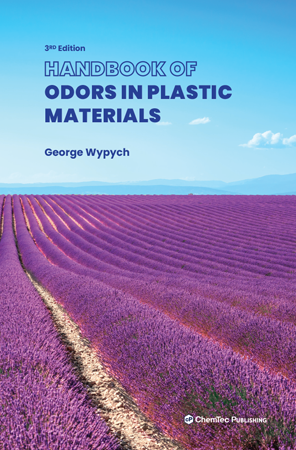This handbook will be of value to a wide range of people involved in the plastics industry, including plastic manufacturing engineers, material scientists and production personnel, quality assurance managers, and laboratory technicians.
It is the first book ever written on this crucial subject. The third edition contains a thorough review of the most recent data, achievements, and information in this less-known but very significant field of polymer modification. The odor of the product may decide whether a product is purchased by a customer or not. Odor is also an important reason for customer complaints, legislative work, legal disputes, and product returns. In scented products, the retention of volatile components is of particular interest. Many leading companies have recognized this as an opportunity, and they actively study and modify odors typical of their products.
Several reasons are behind the formation of odors in plastic materials, including
1. Properties of polymer
2. Use of other materials than polymer, especially materials required in processing (additives)
3. Process parameters and their effect on the severity of degradation of components of the formulation
4. Exposure to different forms of radiation and oxygen
5. Recycling of polymeric materials
6. Contact with other products
7. Storage
a. Diffusion-related properties
b. Migration-evaporation
c. Storage in the same space
The above reasons are analyzed for different materials to find out the best methods to prevent unwanted odor formation. Three chapters are devoted to the analysis of odor-related matters in different polymers, products, and methods of processing. Almost forty polymers and forty-two product groups are analyzed based on research publications and patents.
Other important chapters discuss the mechanism of odor formation and its transport within a material, distinctive odors found in plastic materials, taste, and fogging.
The book also contains information on testing odor changes, the relationship between odor and toxicity, as well as a selection of raw materials for fog-free products.
Handbook of Odors in Plastic Materials presents a comprehensive treatise of the state-of-the-art in all aspects of plastic odor. It covers general techniques for testing, evaluation, and control of plastic odors; identification techniques for plastics derived from renewable feedstocks; deodorants and antiozonants; waste management and its impact on the environment; legislation affecting plastic odor-related products; and future trends toward environmental sustainability.
The Handbook of Odors in Plastic Materials is needed by anyone interested in plastic materials. The book contains complete information based on hard-to-find source publications and numerous patents.
1 Introduction
2 Mechanisms of odor formation and its transport
3 Distinctive odors
4 Taste
5 Fogging
6 Reasons for odor formation in plastic materials
7 Methods of testing in odor analysis
8 Odor in relation to different polymers
9 Odor in various products
10 Effect of processing method
11 Methods of odor removal
12 Regulations
13 Health and safety
14 Indoor air quality
Index




